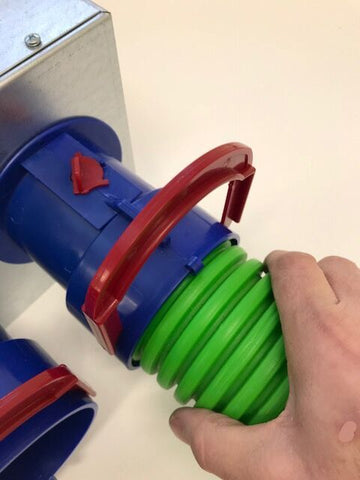
Heat recovery systems, also known as heat recovery ventilation (HRV) systems, are a type of mechanical ventilation system that is designed to efficiently exchange the air inside a building with fresh outdoor air. These systems are particularly useful in maintaining a healthy indoor air quality and controlling the temperature and humidity levels within a building.
One of the main benefits of heat recovery systems is that they can significantly reduce energy consumption. By constantly circulating fresh air into the building, HRV systems reduce the need for heating or cooling the entire volume of air inside the building. This is because the heat recovery system is able to recover a significant portion of the heat from the exhausted air and transfer it to the incoming fresh air. So not alone do you have fresh air in your home it has cost you a fraction of what it would have cost if you have traditional holes in the wall or window vents and extraction fans in the bathroom.
A development of the HRV system is a HRV system with an air to air heat pump with the ability to cool the incoming air or heat it depending on the season.


Heat pump systems can be classified into two main types: air-to-air and air-to-water systems. Air-to-air systems use a heat exchanger to transfer heat between the incoming and outgoing air streams. On the other hand, air-to-water systems use a heat exchanger to transfer heat to a water-based system, which can then be used to heat water or space.
Heat recovery systems can be installed in both new and existing buildings. In new construction, HRV systems can be incorporated into the building design and ventilation system. In existing buildings, heat recovery systems can be retrofitted by installing an HRV unit in the mechanical room or in an attic or crawl space.
There are several factors to consider when selecting a heat recovery system for a building, including the size of the building, the climate in which the building is located, and the specific needs of the occupants. It is important to consult with a professional engineer or HVAC technician to determine the most appropriate HRV system for a particular building.
In summary, heat recovery systems are a highly efficient and effective way to maintain good indoor air quality and control the temperature and humidity levels within a building. By recovering heat from the exhausted air and transferring it to the incoming fresh air, HRV systems can significantly reduce energy consumption and improve the overall comfort and well-being of building occupants.
Manifold adaptor with air flow adjustment
More information about all the Ducting items available.
More information on heat recovery and ventilation machines,
More information on HRV with heat pump



